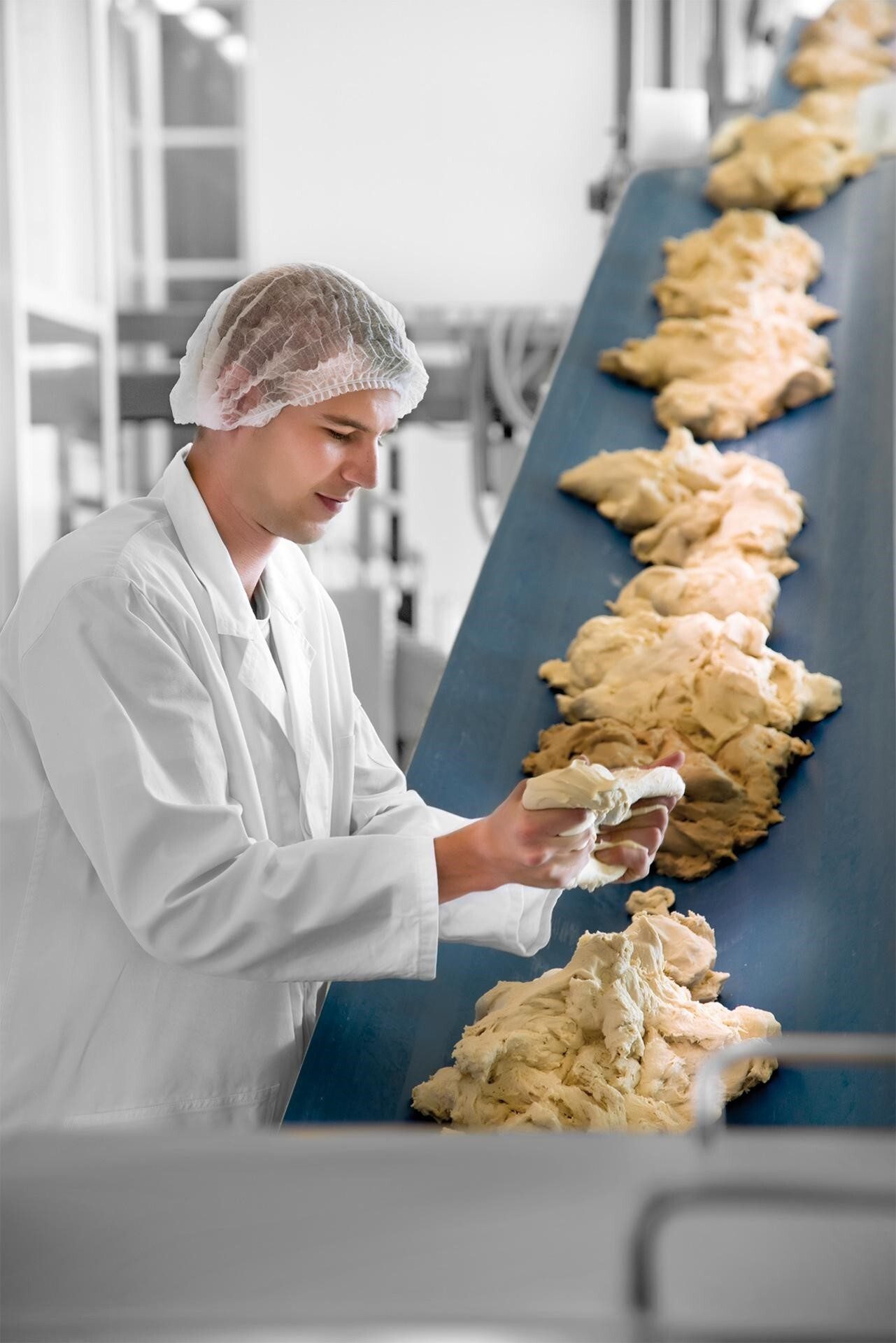Sweeteners
ingredients
The BOTTOM LINE
- Sugar reduction is an increasing concern among U.S. consumers
- Shoppers are growing leery of chemical in favor of natural sweeteners
- Producers are looking to high-intensity sweeteners as a cane sugar alternative
Hitting the sweet spot
U.S. shoppers want snack and bakery products that balance sweet taste and better health.
Joyce Friedberg, Contributing Writer
“Sweet” is one of the five basic tastes, which also includes salt, sour, bitter, and umami. Many people crave sweet foods, but at the same time, consumers are more mindful of sugar in their diet. According to the latest International Food Information Council (IFIC) survey, nearly 75% of Americans say they are trying to limit or avoid sugar in their diet.

SPONSORED BY

Courtesy of Batory Foods
Sarah Diedrich, senior marketing director, global sweetening and texturizing solutions, ADM notes, “As consumers increasingly seek low-or-no sugar products, sweetener scrutiny is growing. This is a crucial factor for shoppers considering new baked goods and snack purchases.” The company has conducted proprietary research in this area.
“Out of the eight in 10 U.S. adult consumers intentionally avoiding or reducing sugar in their diets, 79% find sugar reduction important in bars and snacks and 70% find it important in baked goods, Diedrich shares. “At the same time, shoppers are paying closer attention to the product label and gravitating towards ingredients they recognize and deem as ‘closer-to-nature.’ For example, of the 52% of snack consumers who say they review the ingredient list, 53% say they review the type of sweetener used. The type of sweetener is most important to these consumers when choosing new nutrition/protein bars (65%), fruit snacks / dried fruit (63%), and cereal / granola bars (61%).”
The company sees something similar in baked goods, notes Diedrich. “51% of baked goods consumers say they review the ingredient list, with 53% reviewing the type of sweetener used. This is most important when choosing new fruit pies (60%), cookies (55%), cakes (53%), or brownies (52%).”
It is critical to understand what the manufacturer hopes to achieve in the product and for whom, when selecting the proper tool or tools, notes Hannah Dressen, business development manager for Batory sweetener solutions, Batory Foods. “Whether rare sugars, polyols, fibers, or high-intensity sweeteners, each tool has solutions and limitations to consider. Cost, labeling, dietary restrictions, flavor, and functionality of sugars in the bakery product (fermentation) are all aspects where the final solution may be a synergistic system needing iterative design.”

Courtesy of Pixabay
Dressen continues, “Sugar has been a staple to the snacks and baking industry with deep knowledge and understanding within operations. As new tools and solutions come into the market, the goal of all manufacturers should be to consider the technologies for what can be enabled and seek to build upon the solution provided.”
Rare find
ASR Group recently began offering a rare sugar called tagatose. “Tagatose was originally brought to market in the early 2000’s, but the high cost to produce tagatose remained a hurdle to the products’ widespread adoption. It wasn’t until Bonumose’s breakthrough enzyme technology that tagatose could finally be produced cost-effectively at scale, making it a viable sweetening solution for food and beverage manufacturers,” explains James Kappas, vice president of specialty ingredients, ASR Group. “Tagatose is naturally found in certain fruits and dairy products, including apples, oranges, and pineapples. It is metabolized in the body differently than table sugar (sucrose), which is why it’s 1.5 calories per gram instead of 4 calories per gram. Some of the benefits are that tagatose is 90% as sweet and has 60% fewer calories compared to sucrose, it has a low GI of 3 and is Ketogenic Certified. Additional, studies show tagatose to have prebiotic effects and it recently achieved Non-GMO Project Verified status.”
The company believes tagatose can be a great fit for better-for-you snacks and baked goods due to its browning properties and excellent ability to mask bitter notes.
Batory Foods is in partnership with ASR Group as a distribution partner for tagatose. The partnership focuses on extending the reach of tagatose across the food industry landscape.
New natural sweeteners
Global Organics has launched several new sweeteners recently. Dylan Bates, category manager for proteins and alternative sweeteners, Global Organics, describes these new products.
- Organic agave syrup: Derived from the blue agave plant, it has a lower concentration of glucose compared to cane sugar, making it better for formulations considering low glycemic index as a top priority. It is often considered ‘sweeter’ than cane sugar, so including less can be possible and still achieve the desired sweetness effect. Agave is used in granola bars, cereals, and confectionary items.
- Organic agave/inulin powder: This is a 50% inulin and 50% sweet agave powder, which is made without any added ingredients. This was developed to combine the benefits of agave inulin, a prebiotic fiber, while being able to sweeten. It is appropriate for a variety of applications where both sweetness and added fiber is important.
- Organic date syrup: This item is derived naturally from whole dates. Unlike many other sweeteners, the finished product contains vitamins, minerals, and antioxidants from the original date. Date syrup is appropriate for granola bars, cereals, bakery, sauces and spreads, and other confectionary items.
- Organic tapioca syrup: This is derived from the cassava plant and is often preferred by formulators for its colorless and flavorless profile. It comes in a variety of dextrose levels to meet different viscosity and sweetness needs. Tapioca syrup is ideal for a variety of applications, including granola bars, cereals, bakery, ice cream, and confectionary items.

Courtesy of Icon Foods
The sweetness level of these products will vary depending upon the dextrose equivalent of the syrup, but agave and date are generally sweeter than sugar (only needing 0.5 to 0.75 cups to replace 1 cup of sugar), and with tapioca being slightly more mild than sugar.
ADM recently introduced its SweetRight agave product. Diedrich describes the benefits of this new product as having ”a sweetening potency 25-30% higher than sucrose; less input of SweetRight agave is required to achieve the same sweetness level, supporting sugar reduction targets. SweetRight agave has a neutral sensory profile, binding and browning properties, and exceptional solubility, moisture retention, and humectancy, enabling ease of use for bakers in a variety of treats and applications from cookies to cakes and muffins.” The SweetRight agave is both Fairtrade and organic certified.
According to Catherine Barry, vice president of marketing, National Honey Board, “Although honey has been used in baking for thousands of years, it remains as popular as ever and continues to grow in terms of usage due to consumer demand. In a May 2023 consumer survey conducted by IFIC, honey was the No. 1 preferred sweetener in foods and beverages. We expect honey’s popularity to continue growing as more and more consumers begin to understand the important connection that honey and honey bees have with the entire food system.” She notes starting to see honey being used as a multi-functional ingredient in a variety of baked goods and cited Kate’s Real Foods, which uses honey in its bar for both sweetness while also helping to bind the ingredients together.
High intensity
Icon Foods will soon be launching its new IconiSweet Gold product, which is a natural sweetener that compacts, bakes, has the same flavor and consistency and is a 1:1 replacement for brown sugar. Thom King, CEO and chief food scientist, Icon Foods, says, “It is a proprietary blend of erythritol, allulose, monk fruit, vegetable glycerin, and natural flavors and colors that tastes and responds just like brown sugar in baked applications. It participates in Maillard and contributes to caramelization for crispy, browned crusts on most baked goods.” It can be used in brownies, cookies, fillings, pies, and dark breads such as rye and pumpernickel.
“Although honey has been used in baking for thousands of years, it remains as popular as ever and continues to grow in terms of usage due to consumer demand.”
— Catherine Barry, vice president of marketing, National Honey Board

IconiSweet Gold reportedly pairs with ThauSweet DRM, another new product Icon Foods launched earlier last year, when food manufacturers feel a need to bring out even more sweetness and flavor without bulking. “ThauSweet DRM is a new sweetness modulator that can be listed as a natural flavor. It enhances the sweetness of ingredients you’ve already added and enhances flavor in both sweet and savory. It uses thaumatin, a sweetness modulator derived from katemfe berry and bioconverted RebM steviol glycosides,” shares King.
ADM has added a new product to the stevia line: SweetRight Stevia Edge-M. “SweetRight Stevia Edge-M is isolated directly from the stevia leaf. It is also not produced via fermentation to bioconversion, which means it can be listed as ‘stevia leaf extract’ on product labels. The product is excellent in bars, snacks, and other baked goods, providing improved sweetening, reduced bitterness and increased solubility compared to Rebaudioside (Reb) M,” explains Diedrich.

Courtesy of Cargill
Cargill’s newest sweetener system is EverSweet stevia sweetener + ClearFlo natural flavor. “Alongside its sugar-like taste, one of the big advantages of this sweetening solution is its ability to help mask flavors in certain applications. For example, we’ve successfully used EverSweet + ClearFlo to help mask off- flavors associated with plant proteins in a high protein bar,” shares Courtney LeDrew, marketing manager, Cargill.
Consumers will continue to have a sweet tooth, but are looking for better-for-you options they can feel good about. SF&WB




